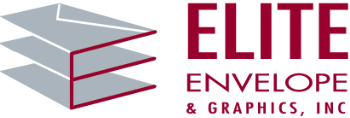
Envelopes have typically been printed either flexographically (rubber or plastic printing plate) or offset (metal plate). Those two processes (in addition to flat sheet printing/converting) are still the most common for the vast majority of envelope printing. Today’s post however deals with the world of digital envelope printing and how that can be used to your advantage for full color envelope printing.
Flexographic printing for envelopes is generally only economical on larger runs of approximately 100,000 or more. Since digital is only economical on smaller runs, we will only focus on comparing it to offset printing.
Digital envelope printing is done electronically. There are no printing plates. The printer automatically sends out the proper mix of colors to achieve the image that was programmed. Digital envelope printing can be done with toner (like most desk top digital printers) or with later models that use ink jet technology where the color is “sprayed” onto the envelope.
In the world of envelope printing and envelope converting, digital printing is only economical on very small quantity jobs – generally under 5,000. The quality is comparable to offset although many prefer offset or lithographic quality. There is a different look to digital envelope printing – a little shinier perhaps. From the strict standpoint of quality, the one possible advantage of digital printing is that there would be less variation over the course of the print run given the fact that offset printing requires continuous fine adjustments in the ink/water mixture.
Mostly the advantage of choosing digital custom envelope printing over offset boils down to cost. It’s much less expensive to set up and run a job digitally. So, the fewer envelopes you require, the more it makes sense to print them digitally. Once the quantity gets to around 5,000, offset becomes more advantageous cost-wise and as the quantities increase, the unit cost of offset printing decreases significantly. Digital printing unit pricing stays relatively constant regardless of the increase in quantity.
Recent advances in digital printing for envelopes such as the I Jet can print full color images that bleed right to the edge. Previously this could only be done by printing flat sheets and converting at a much higher cost. Another advantage to the ink jet digital approach is it can print on regular poly window envelopes. Toner printers generate much higher heat in order for the toner to adhere to the paper. This can melt regular windows. Lastly, envelopes printed using digital ink jet technology can be run through laser printers for variable addressing. This is great for direct mail printing and is not possible with toner-based digital printing.
Elite Envelope provides a wide range of digital envelope printing options. We’ll be happy to answer any questions you may have on the right way to go.
